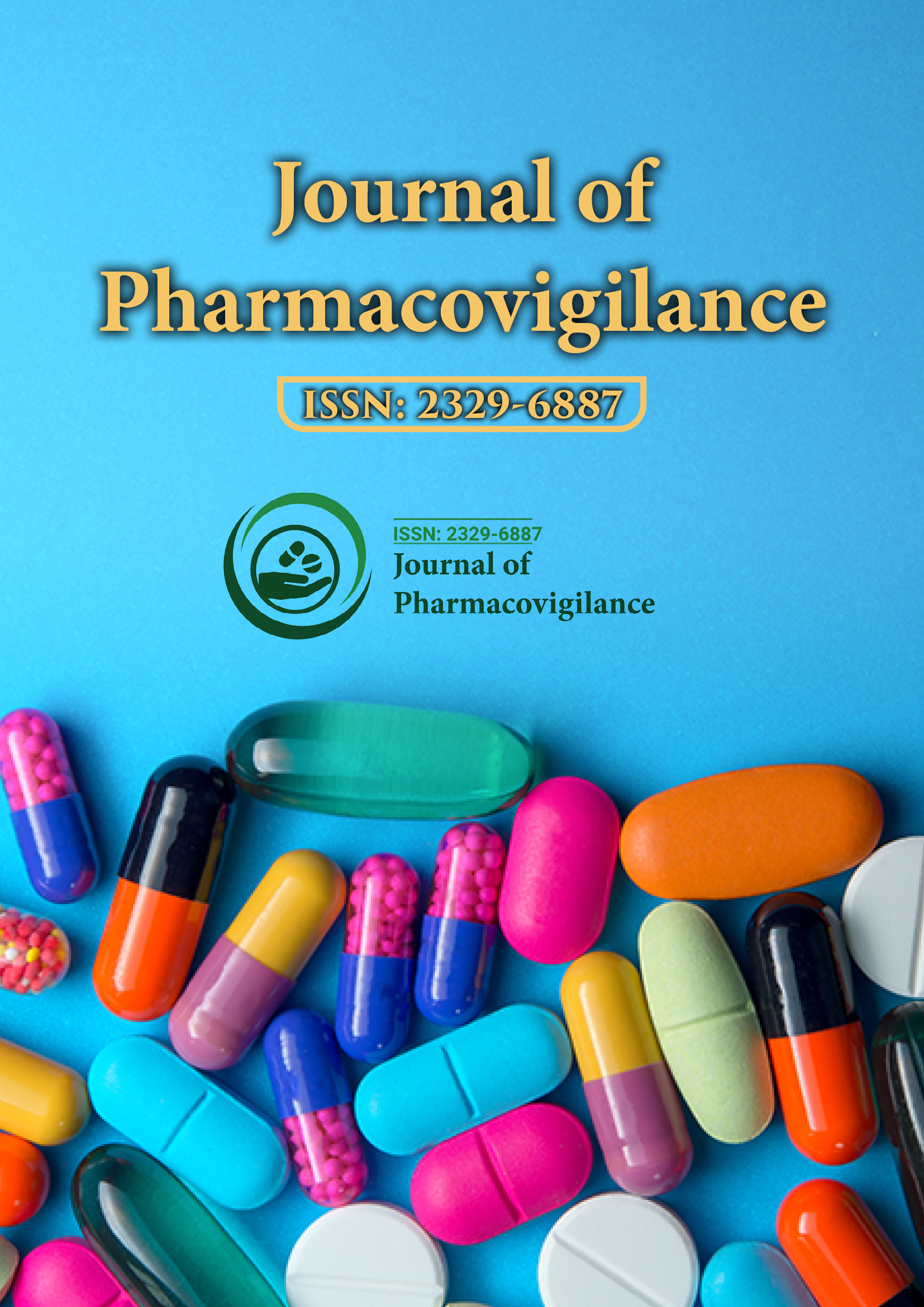Indexed In
- Open J Gate
- JournalTOCs
- The Global Impact Factor (GIF)
- RefSeek
- Hamdard University
- EBSCO A-Z
- OCLC- WorldCat
- Publons
- Euro Pub
- Google Scholar
Useful Links
Share This Page
Journal Flyer

Open Access Journals
- Agri and Aquaculture
- Biochemistry
- Bioinformatics & Systems Biology
- Business & Management
- Chemistry
- Clinical Sciences
- Engineering
- Food & Nutrition
- General Science
- Genetics & Molecular Biology
- Immunology & Microbiology
- Medical Sciences
- Neuroscience & Psychology
- Nursing & Health Care
- Pharmaceutical Sciences
Perspective - (2025) Volume 13, Issue 2
Strengthening Patient Care by Monitoring Medication Risks Continuously
Nathaniel Brooks*Received: 26-May-2025, Manuscript No. JP-25-29711; Editor assigned: 28-May-2025, Pre QC No. JP-25-29711; Reviewed: 11-Jun-2025, QC No. JP-25-29711; Revised: 18-Jun-2025, Manuscript No. JP-25-29711; Published: 25-Jun-2025, DOI: 10.35248/2329-6887.25.13.513
Description
The ongoing observation and monitoring of medications after their approval for public use play a vital role in enhancing patient safety and optimizing therapeutic outcomes. While pre-approval clinical trials provide critical data about a drug’s initial safety and efficacy, they have inherent limitations. These trials are conducted in controlled environments with a relatively small, carefully selected group of participants and over a limited time frame. As a result, they cannot capture every potential adverse effect, especially those that may manifest only after long-term use or within broader, more diverse patient populations once the drug is widely distributed. This reality underscores the essential need for continuous, rigorous oversight after a medication enters the market to identify and address emerging safety concerns promptly.
Post-marketing surveillance, often called pharmacovigilance, is the systematic process of monitoring drugs once they are available for general use. This process heavily relies on gathering and analyzing reports about any adverse drug reactions or unexpected effects submitted by healthcare professionals, patients, and pharmaceutical manufacturers. These reports are collected into centralized databases where safety experts and regulatory authorities evaluate the data for any emerging patterns or signals that could indicate previously unrecognized hazards. The early detection of such safety issues allows for timely intervention whether that involves updating clinical guidelines, modifying dosage recommendations, issuing safety warnings, or, in rare cases, withdrawing a drug from the market entirely. These interventions are crucial for reducing the risk of harm and ensuring that the benefits of a medication continue to outweigh its risks.
Encouraging active participation in adverse event reporting is fundamental to the success of post-marketing safety systems. Healthcare practitioners must be well-informed about the importance of documenting and communicating any unusual or serious drug-related events. Their clinical expertise and frontline experience provide valuable insights into how a drug performs in real-world settings. Simultaneously, patients themselves play a critical role in this process. Educating patients to recognize potential side effects and empowering them to report these experiences whether directly to regulatory authorities or through their healthcare providers enhances the volume and quality of safety data.
Technological innovation has revolutionized pharmacovigilance efforts. Modern data analytics tools can process vast amounts of information from a multitude of sources with remarkable speed and accuracy. These technologies enable the detection of subtle safety signals or trends that might otherwise go unnoticed through manual review. Integration of adverse event reports with electronic health records and pharmacy databases further enriches the context in which these events are analyzed, allowing a more comprehensive understanding of patient experiences and outcomes. Moreover, international cooperation among regulatory bodies and healthcare organizations enhances the collective ability to monitor drug safety on a global scale. Sharing safety data across borders helps identify rare or region-specific adverse effects more quickly, facilitating coordinated responses that protect patients worldwide.
Beyond the technical and procedural aspects, there is a profound ethical dimension to continuous drug safety monitoring. It represents a commitment by all stakeholders including healthcare providers, pharmaceutical companies, regulatory authorities, and patients to prioritize patient welfare and public health. This proactive approach to identifying and managing medication risks fosters greater confidence in medical treatments. Transparent communication about the benefits and risks of therapies helps patients and clinicians make informed decisions, balancing potential advantages with possible adverse outcomes.
Conclusion
Maintaining vigilant oversight of medication safety after market approval is indispensable to ensuring that treatments remain as safe and effective as possible throughout their lifecycle. By combining the efforts of healthcare providers, patients, regulators, and industry, supported by technological innovation and global collaboration, ongoing surveillance enables early detection and swift management of safety concerns. This continuous commitment to monitoring medication effects ultimately supports better patient care, advances medical science, and upholds trust in the healthcare system.
Citation: Brooks N (2025). Strengthening Patient Care by Monitoring Medication Risks Continuously. J Pharmacovigil. 13: 513.
Copyright: © 2025 Brooks N. This is an open-access article distributed under the terms of the Creative Commons Attribution License, which permits unrestricted use, distribution and reproduction in any medium, provided the original author and source are credited.

